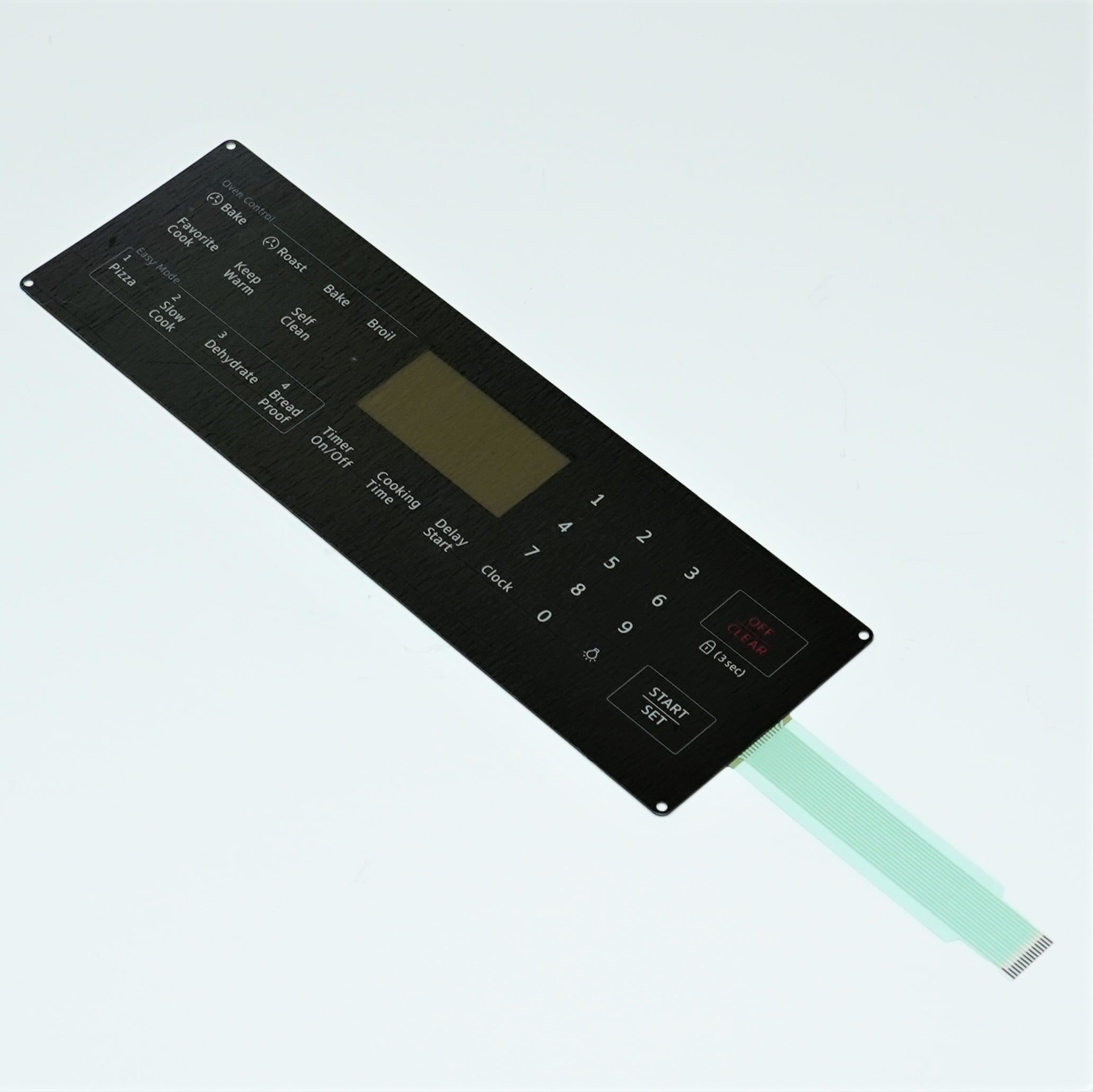Innovative Membrane Switch Solutions for Customized Control Panels
Innovative Membrane Switch Solutions for Customized Control Panels
Blog Article
Comprehending Membrane Switches: The Trick to Dependable and durable Controls

What Are Membrane Layer Switches?
Membrane layer switches are an advanced remedy in the realm of interface innovation, combining performance and layout perfectly. These gadgets offer as an interface between individuals and electronic systems, integrating a number of parts right into a small format. Commonly built from adaptable, slim layers of products, membrane switches are designed to react to touch, enabling users to interact with equipment and electronic gadgets effectively.
The key elements of a membrane layer button consist of a published circuit layer, visuals overlay, and a spacer layer that prevents unintended activation. The graphic overlay can be tailored to mirror brand name identification or individual choices, improving visual appeals while making certain usability. Membrane layer buttons are generally used in various applications, consisting of clinical tools, customer electronics, and commercial devices, owing to their sturdiness and resistance to ecological aspects such as wetness and dust.
Among the vital benefits of membrane layer switches is their capacity to withstand damage, making them ideal for high-traffic environments. In addition, they are lightweight and need marginal area, permitting cutting-edge designs in product advancement. Generally, membrane layer switches over represent a reliable and practical selection for contemporary electronic interfaces, weding technology with user-centric style principles.
Just How Membrane Switches Over Job
The operation of membrane switches joints on an easy yet efficient device that equates user input right into digital signals. When a user presses the switch, the top layer warps, permitting a conductive aspect in the circuit layer to make contact with an equivalent conductive pad on the bottom of the visuals overlay.
The layout of membrane layer buttons can vary, but they usually incorporate domes or tactile elements to provide responses to the user, enhancing the overall experience - membrane switch. The materials utilized in membrane buttons, such as polyester or polycarbonate, add to their durability and resistance to ecological variables, including moisture and dust. The published circuits are commonly encapsulated, which protects them from wear and tear over time.
Advantages of Membrane Switches

Additionally, membrane layer switches are known for their longevity. Created from durable products, they are immune to dust, dampness, and physical wear, discover here which substantially expands their life-span compared to typical mechanical buttons. This resilience makes them especially suitable for high-traffic atmospheres and applications requiring long life.
One more substantial advantage is the simplicity of cleaning and upkeep. The smooth surface of membrane layer switches decreases dust accumulation and is commonly invulnerable to spills, making them suitable for setups that call for frequent sanitization.
Additionally, membrane switches use a streamlined account, causing a thinner layout that can be integrated right into numerous tools without including mass. This function not just improves the visual appeal yet also adds to an extra ergonomic product design.
Applications of Membrane Layer Buttons
Versatile and user-friendly, membrane switches discover applications across a variety of industries, including medical tools, customer electronic devices, and industrial devices. In the clinical field, these buttons are integral to gadgets such as diagnostic devices, person monitoring systems, and infusion pumps, where integrity and ease of cleaning are essential. Their ability to maintain and withstand harsh settings functionality makes them optimal for such applications.

In consumer electronics, membrane switches are utilized in items like microwaves, washing machines, and push-button controls - membrane switch. Their sleek design allows for user-friendly customer interfaces, boosting the overall user experience while supplying sturdiness and resistance to tear and put on
Commercial equipment also benefits from membrane layer buttons, particularly in control panels for equipment and automation systems. These check here switches use security against dust and wetness, making certain consistent efficiency in difficult settings. Their personalized attributes permit producers to customize them to details operational demands, boosting efficiency and performance.
Selecting the Right Membrane Layer Switch
When selecting a membrane switch, it is important to think about numerous variables that influence efficiency and suitability for details applications. The key factors to consider include environmental problems, tactile comments, sturdiness, and layout specifications.
First, analyze the operating environment; switches revealed to wetness, chemicals, or extreme temperature levels require specific products to guarantee durability and functionality. Next off, examine the demand for tactile responses. Depending on user communication, some applications may benefit from a tactile action to confirm activation, while others might like a non-tactile design for visual reasons.
Durability is one more important element; membrane layer buttons need to be designed to hold up against constant use, effects, and abrasion. Guarantee the selected switch can withstand the expected lifecycle, specifically in high-usage scenarios.

Verdict
In verdict, membrane layer switches work as crucial components in the layout of resilient and reliable control systems across different markets. Their small design, integrated with robust building and construction and adjustable attributes, enhances individual communication while making certain long life popular settings. The versatility of membrane changes enables for customized remedies that meet particular functional demands, reinforcing their relevance in contemporary technology. As markets remain to progress, the significance of integrating efficient membrane button remedies can not be overemphasized.
Membrane layer switches over stand for a vital aspect of modern interface layout, mixing capability with strength in numerous applications.Membrane buttons are a sophisticated solution in the world of user interface modern technology, combining functionality and design seamlessly. Generally built from flexible, slim layers you could try here of materials, membrane buttons are developed to respond to touch, enabling users to connect with equipment and digital gadgets properly.
The layout of membrane layer switches can vary, yet they frequently include domes or responsive elements to provide comments to the user, boosting the general experience.In verdict, membrane layer changes offer as important elements in the layout of durable and reliable control systems throughout numerous industries.
Report this page